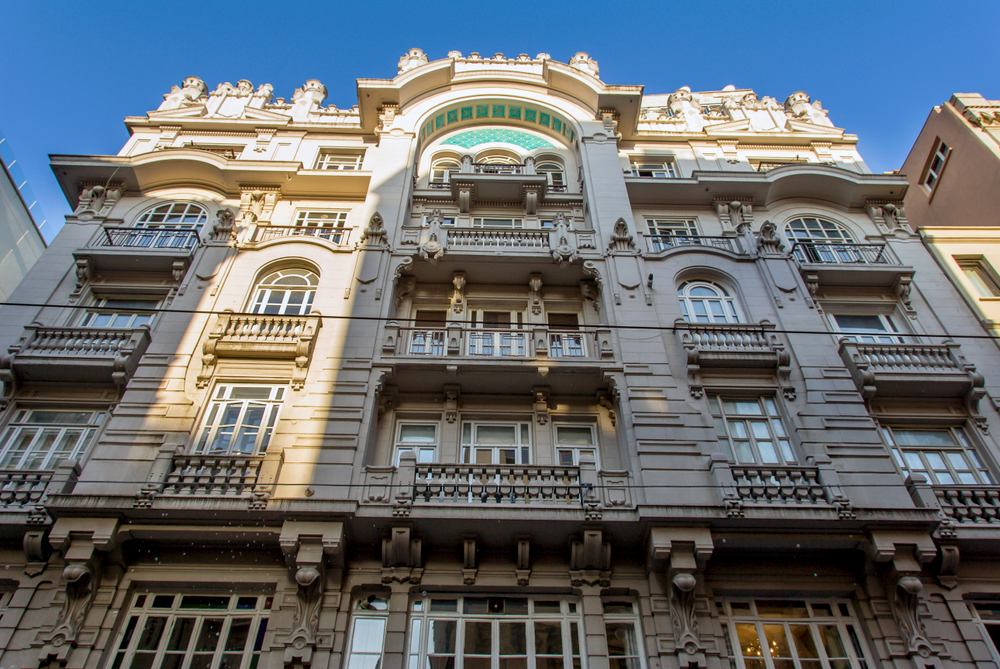Structures Carrying the Western Breath in Istanbul Constructed in the Late Ottoman Period
In the 1800s, Istanbul quickly became a place where the European intellectuals, the bourgeoisie are frequently visited and began the process of Europeanization. When the Ottomans were recognized as the “sick man of Europe,” they were in the first place of Europeans’ strategic plan which led to an increase in the interest of the European nations to the Ottoman Empire. For all these reasons, Istanbul, a city that represents the Eastern civilization at that time, has soon become a heart of attraction for Europeans. By the end of the 1800s, Istanbul was a highly developed city, and it has started to become more European, artistically, culturally and socially. One of the most important areas in which this impact is reflected to was Istanbul’s architecture. Almost all the buildings constructed in Istanbul in the last period of the Ottoman Empire are therefore carrying the westerly breeze. In this article, we will share the structures that have survived from the last period of the Ottoman Empire to the present day. Here are the most important structures of Istanbul and their architectural features!
Pera Palace Hotel

Pera Palace Hotel was built to answer the luxurious accommodation needs of high-level passengers traveling to Istanbul with the commencement of Orient Express, which started the Paris-Istanbul run at the end of the 1800s, and in a short period, it has become a popular destination for prominent names such as diplomats, statesmen, and writers from different countries.
Pera Palace Hotel is an exceptionally architectural phenomenon for that time’s Istanbul. The architect of the hotel, Alexander Vallaury, destroyed the Ottoman traditional architectural concept with his state-of-the-art design. The hotel is built on a hill overlooking the Golden Horn; in its architecture, neoclassical and orientalist elements were used synchronically. Pera Palace Hotel is one of the most influential buildings in the last period of the Ottoman Empire in Istanbul due to its striking architectural characteristic and technological innovations (electric lift, hot water).
Mısır Apartments
The Mısır apartment which stylishly and elegantly extending to the sky in Beyoglu, constructed by the famous architect Hovsep Aznavuryan for more than a century ago. The architecture of this majestic building is intensely covered by the art concept called Art Nouveau (new art). Its façade features spectacular balconies, chambers, large windows, and framed ornaments adorned with cut stone front view sculptures that are truly remarkable.
Istanbul Archeology Museum

One of the primary buildings built in Istanbul in the last period of the Ottoman Empire is the Istanbul Archeology Museum. The architect of this building is Alexander Vallaury, who is also the architect of the Pera Palace Hotel. The building, which is one of the most excellent examples of neoclassical architecture, brings attention with its ornaments on the facades and its great stance.
Vlora Han
Built by the renowned Italian architect Raimondo D’Aronco in the Art Nouveau style at the beginning of the 20th century, Vlora Han in Sirkeci is considered one of the most exceptional examples of neoclassical architecture. Even though the building is in ruins today, the reliefs with rose motifs on its front are still outstanding.
Botter Apartment
Botter Apartment, also known as the first Art Nouveau building in Istanbul, was built by the Italian architect Raimondo D’Aronco. The structure is one of the most prominent representatives of the worldwide sprouting Art Nouveau movement at the end of the 19th century in Turkey.
Soho House

Giacomo Leoni is the architect of one of the notable buildings of Beyoğlu, Soho House. The distinguished architect has uniquely brought a range of materials, from door and window frames to Carrara marble from Italy for the creation of the structure. The construction of the building is known to last for a total of nine years.
Çiçek Pasajı

Çiçek Pasajı, originally called the Cité de Péra that we could name as the symbol of Beyoğlu today. The building was finished in 1876, and it has 24 shops decorated in Parisien style and 18 luxury apartments on the top. Built by the famous Italian architect Cleanthy Zanno, this impressive building was constructed in a Neo-Baroque style. With its unique architecture, an enchanting atmosphere and inner magnetic dynamics, it continues to impress those who still visit it.
Huber Mansion

The architect of the Huber Mansion, one of the most noteworthy mansions of the Bosphorus, is unknown. Nevertheless, this mansion has an important place among the Art Nouveau works in Istanbul. It is still a mystery that who is the architect or the first owner of the building, but it is known that August Huber bought it from an Armenian family in 1890 and added a few other buildings to the famous architect Raimondo D’Aronco.
These articles may also be of interest to you:
Destination Guide for Those Who Will Travel to Istanbul During the Summer
10 Must-See Locations for Literature and Art Travelers in Istanbul
8 World Famous People Strolled Around The Streets Of Istanbul




